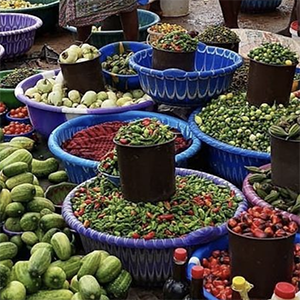A descriptive cross-sectional study of food hygiene practices among informal ethnic food vendors in Gauteng Province, South Africa

Accepted: 16 January 2022
Supplementary Files: 32
HTML: 16
All claims expressed in this article are solely those of the authors and do not necessarily represent those of their affiliated organizations, or those of the publisher, the editors and the reviewers. Any product that may be evaluated in this article or claim that may be made by its manufacturer is not guaranteed or endorsed by the publisher.
Authors
Demand for ethnic foods by the immigrant population has led to proliferation of ethnic food shops (shops selling foods eaten by different ethnic groups). However, the status of the food hygiene practices among these vendors is unknown. This study investigated food hygiene practices among informal ethnic food vendors in Gauteng Province (GP), South Africa. Participants included immigrants managing informal ethnic food shops in GP. Snowball sampling was used to identify participants (n=40). A questionnaire/checklist was used to collect information on hygiene practices. Although majority of ethnic food shops (95%; n=38) operated in permanent structures, just over half (55%; n=22) of these facilities had windows. The remaining 5% (n=2) of the vendors operated from the boot/trunk of cars. None of the participants had a food probe used to monitor the temperature of food. Most of the participants (65%; n=26) did not own freezers, and just above half (55%, n=22) had microwave ovens. Majority (95%; n=38) of the respondents had access to toilet facilities and tap water at their premises. Only two (5%; n=2) respondents brought water from home, and these used public toilets at shopping centers in the vicinity of their businesses. Majority (72.5%; n=29) of the respondents were not aware of the importance of keeping food above 65˚C. Slightly over half (55%, n=22) of the respondents did not reheat the food before serving, and only 10 % (n=4) followed proper food reheating procedures. Poor food hygiene practices and lack of appropriate food handling equipment and facilities are common among ethnic food vendors. The widespread lack of awareness of the importance of holding food above 65˚C, and the high prevalence of not reheating the food before serving, and not following proper food reheating procedures, are a major source of concern as these practices are potentially associated with promoting food contamination with foodborne diseasecausing organisms. It is envisaged that findings reported here can guide policy makers to design policies that promote selling safe food by ethnic food vendors. To enhance compliance, it is recommended that such policies should be user friendly to the operators of informal ethnic food shops.
How to Cite
PAGEPress has chosen to apply the Creative Commons Attribution NonCommercial 4.0 International License (CC BY-NC 4.0) to all manuscripts to be published.

 https://doi.org/10.4081/ijfs.2022.9885
https://doi.org/10.4081/ijfs.2022.9885



